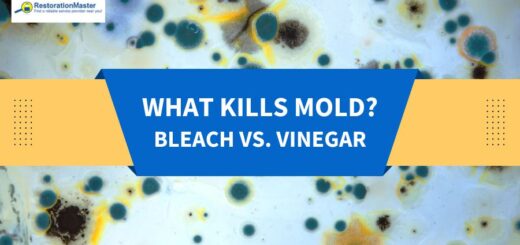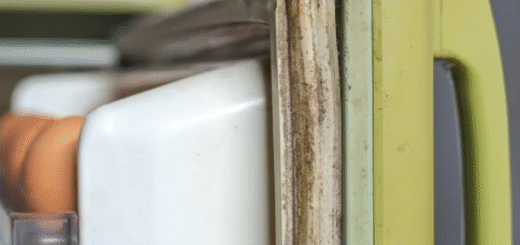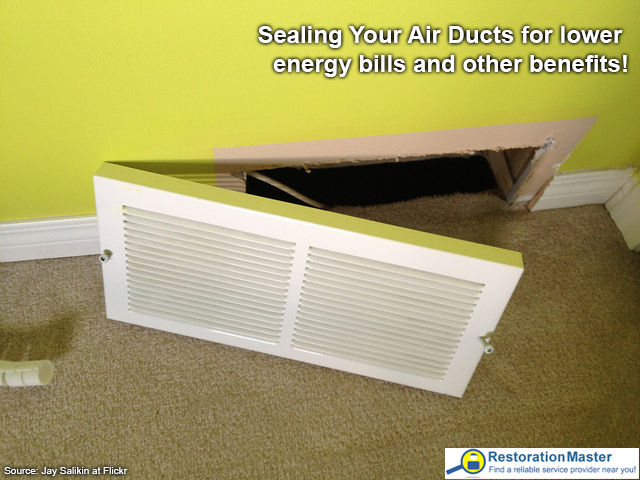How to Prevent and Respond to Mold Growth in Your Air Ducts
The HVAC system plays an important role in your home, business, or commercial building. It allows you to heat or cool the property to your desire by distributing air throughout the space. But this can be problematic if your air ducts aren’t clean.
Dust, dirt, and other debris can accumulate in your air ducts and will be distributed into the air. Even worse, moldMold is a type of fungus that grows in damp or humid conditi... More can develop in air ducts as well. This is worse than moldMold is a type of fungus that grows in damp or humid conditi... More developing in your bathroom or on walls and ceilings, because if moldMold is a type of fungus that grows in damp or humid conditi... More colonies form in your air ducts, then the moldMold is a type of fungus that grows in damp or humid conditi... More will be distributed into the air throughout the property. Recognizing the presence of moldMold is a type of fungus that grows in damp or humid conditi... More in your air ducts is essential, along with understanding the signs of an infestation. Additionally, it’s important to be aware of the dangers mold poses and how professional air duct cleaning can benefit your home.
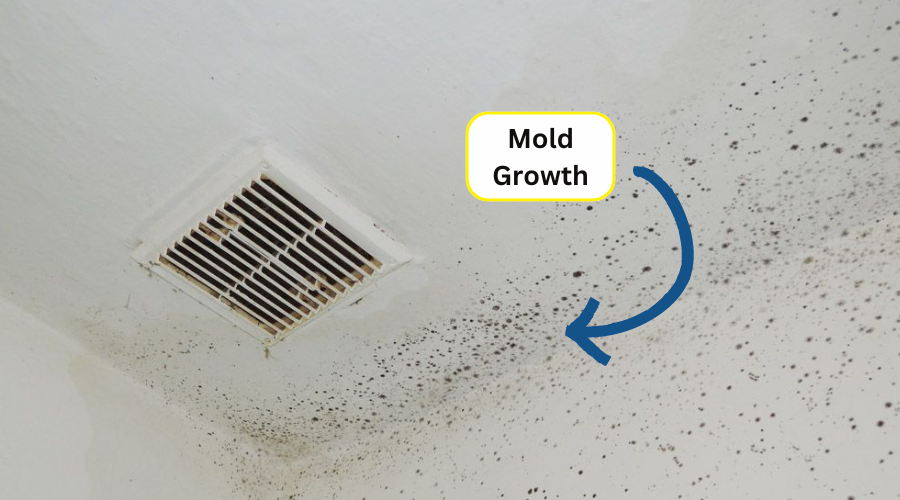
How Does Mold Form in Air Ducts?
MoldMold is a type of fungus that grows in damp or humid conditi... More thrives in humid environments with excess moisture, and it also helps if it has an organic food source. As such, if there’s water vaporVapor is the gaseous form of a substance that is typically l... More in your air ducts, then moldMold is a type of fungus that grows in damp or humid conditi... More may form inside, using dirt, dust, and other debris as its food source. Water vaporVapor is the gaseous form of a substance that is typically l... More can develop when cool air passes through the system and ducts and if water vaporVapor is the gaseous form of a substance that is typically l... More outside of the ducts forms water droplets.
Signs of Mold Growth in Air Ducts
Unlike moldMold is a type of fungus that grows in damp or humid conditi... More growth on walls and ceilings, you likely cannot see moldMold is a type of fungus that grows in damp or humid conditi... More growth in your HVAC system. In some cases, the moldMold is a type of fungus that grows in damp or humid conditi... More might be growing on the vents and near the air ducts where it is visible, but this isn’t always the case.
- MoldMold is a type of fungus that grows in damp or humid conditi... More has a musty smell like the type of smell you would expect to encounter in an old basement. If your home has this odorAn odor is a smell, often detectable by the human nose, whic... More, especially while the HVAC system is on, you may have moldMold is a type of fungus that grows in damp or humid conditi... More in your air ducts.
- Even if you can’t see moldMold is a type of fungus that grows in damp or humid conditi... More in the air ducts, you might find it on surfaces in your home. MoldMold is a type of fungus that grows in damp or humid conditi... More can appear in various colors, such as black, blue, brown, green, or white, and it typically has a fuzzy or spotty texture, often accompanied by water damage or rot in the surrounding area.
- The presence of moldMold is a type of fungus that grows in damp or humid conditi... More in your home can leadLead is a heavy metal that can be toxic to humans, especiall... More to a variety of health issues, particularly for individuals with underlying respiratory conditions, allergies, young children, and the elderly. Exposure to moldMold is a type of fungus that grows in damp or humid conditi... More may worsen breathing problems, trigger asthma attacks, and cause throat or eye irritation, headaches, dizziness, and fatigue. Prolonged exposure to severe moldMold is a type of fungus that grows in damp or humid conditi... More infestations can result in neurological problems and even damage to internal organs. Maintaining a mold-free environment is crucial for safeguarding your health.
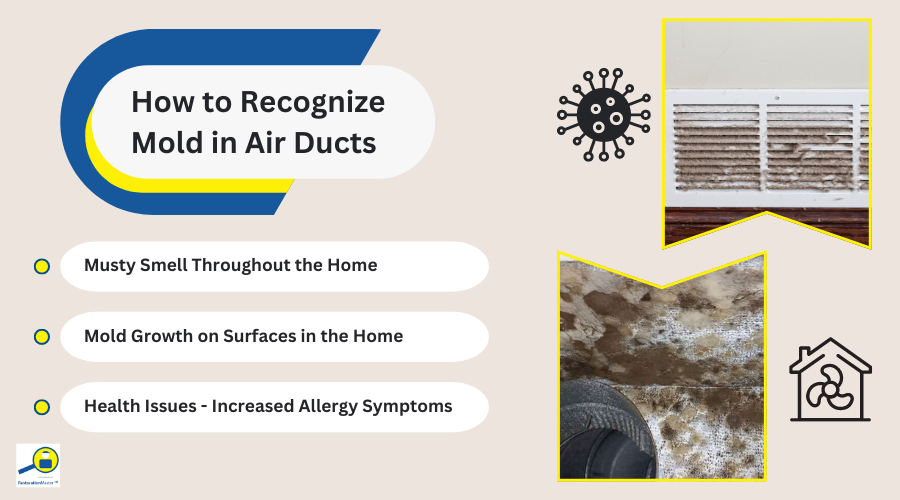
Mold Growth Prevention in Air Ducts
Understanding how to prevent moldMold is a type of fungus that grows in damp or humid conditi... More in your air ducts is essential. As a homeowner, here are steps you can take to prevent moldMold is a type of fungus that grows in damp or humid conditi... More growth in your HVAC system and throughout your home:
- Replace the HVAC system filter regularly and make sure it runs properly. If the airflow is limited, you can end up with extra moisture in the ducts.
- The ducts should be properly sealed and insulated. This will keep the air ducts dry.
- Invest in a dehumidifierA dehumidifier is a device that removes excess moisture from... More and always run it in the areas that are prone to moisture and moldMold is a type of fungus that grows in damp or humid conditi... More growth. It also helps to run it in the basement and the bathroom to remove moisture in the air.
How Do I Respond to Mold in My Air Ducts and HVAC System?
If you believe you have moldMold is a type of fungus that grows in damp or humid conditi... More in your HVAC system and air ducts, then you should get this problem addressed immediately. You do not want to worsen the moldMold is a type of fungus that grows in damp or humid conditi... More problem, or any mold-induced health problems people may be experiencing. If there is a moldMold is a type of fungus that grows in damp or humid conditi... More problem in the air ducts, stop using your HVAC system, and do not use it again until the moldMold is a type of fungus that grows in damp or humid conditi... More issue has been fixed. Otherwise, using your HVAC system to heat or cool your property will just allow the moldMold is a type of fungus that grows in damp or humid conditi... More to continue spreading.
Call Professionals for Mold Inspection and Air Quality Testing
To know for sure if you’re dealing with moldMold is a type of fungus that grows in damp or humid conditi... More, you might want to have a moldMold is a type of fungus that grows in damp or humid conditi... More test done. Sometimes, what you think is moldMold is a type of fungus that grows in damp or humid conditi... More ends up just being dust or dirt, so it can be a good idea to hire a moldMold is a type of fungus that grows in damp or humid conditi... More inspector. A professional company will inspect all areas of your home, initially looking for visible moldMold is a type of fungus that grows in damp or humid conditi... More spots. They will then take air and swab samples to send to a lab, determining if moldMold is a type of fungus that grows in damp or humid conditi... More is indeed present.
During a moldMold is a type of fungus that grows in damp or humid conditi... More inspectionInspection is the careful examination and assessment of a pr... More, the quality of indoor air is also assessed, which can reveal the presence of moldMold is a type of fungus that grows in damp or humid conditi... More sporesSpores are microscopic reproductive units of fungi or mold t... More. Other harmful air contaminants that might be detected include radonRadon is a naturally occurring radioactive gas that can accu... More, VOCs (volatile organic compounds), mercury, fumes from carpets, flooring, carbon monoxide, formaldehyde, or high levels of smoke. Even small amounts of these pollutants can be hazardous, making regular air quality testing essential for every homeowner.

Understand the Extent of Mold
Once you receive the inspectionInspection is the careful examination and assessment of a pr... More results, the professional service will inform you if moldMold is a type of fungus that grows in damp or humid conditi... More is present in your home, specifying the type and location. This information is invaluable for the air duct cleaning service. If the moldMold is a type of fungus that grows in damp or humid conditi... More detected is toxic, you may need to vacate your home until the moldMold is a type of fungus that grows in damp or humid conditi... More removal and cleaning process is complete.
Allow Professionals to Conduct Air Duct Cleaning
When it comes to cleaning the moldMold is a type of fungus that grows in damp or humid conditi... More, don’t do it yourself. If done incorrectly, the moldMold is a type of fungus that grows in damp or humid conditi... More problem can be worsened. You also don’t want to expose yourself to the fungus and put yourself at further risk of suffering from health issues.
During professional air duct cleaning, technicians use specialized chemicals and tools to clean and disinfect all components of the HVAC system, including motors, fans, and coils. They also apply specific cleaning solutions designed to eradicate moldMold is a type of fungus that grows in damp or humid conditi... More sporesSpores are microscopic reproductive units of fungi or mold t... More that thrive in the ducts.
If you believe there may be moldMold is a type of fungus that grows in damp or humid conditi... More in your air ducts, it is important to reach out to a professional who provides air duct cleaning services. These professionals use advanced equipment to thoroughly clean air ducts and internal components of HVAC systems and they can safely remove any moldMold is a type of fungus that grows in damp or humid conditi... More found within the ducts. Having your air ducts cleaned will not only help protect your home from moldMold is a type of fungus that grows in damp or humid conditi... More and improve indoor air qualityIndoor air quality (IAQ) refers to the condition of the air ... More but also increase the efficiency of your heating and cooling.










